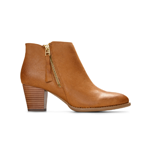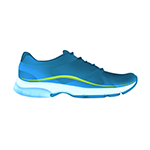
6 TIPS FOR FINDING THE PERFECT FIT
Everyone deserves to have their Cinderella moment: when you slip into a pair of shoes and immediately say, “YES!” Unfortunately, finding the perfect-fitting shoe is not always so easy.
Vionic is a pioneer in developing shoes that provide natural alignment from the ground up, and we know a thing or two about shoes. Our collection was developed by a team of world-class podiatrists and designed to hug your arches and support your feet in all-day comfort. Here are six tips for making sure your shoe fits perfectly every time.
Tip #1: Your shoe should fit the shape of your foot.
For example, if you have a wide forefoot or wider foot in general, pointed-toe pumps will most likely be an uncomfortable option for your foot shape. Your forefoot should fit comfortably within the width of the shoe (i.e. the ball area of your foot should be sitting within the widest part of the front of the shoe). If you're not sure, try reading this article on wide shoes.
Tip #2: Except for the very front tip of the shoe, you should be able to feel the shoe around your entire foot.
There should not be so much space in your heel that it is lifting out of your shoe at every step, or that you experience rubbing and friction against your heel. There should be less than a finger’s width of space between your longest toe and the tip of the shoe.
Tip #3: Don’t start with shoes that are uncomfortably tight, thinking they’ll “stretch out” over time.
Just like with clothing sizes, it’s best not to get hung up on a number. Almost every brand varies slightly in sizing, so make sure to always try on shoes for comfort! (Additionally, most people’s feet are not exactly the same in size, so you should always fit to your larger foot.)
Tip #4: If you have problems with your big toe joint, find a stiff-soled shoe.
Stiffness in the joint can be a sign of early arthritis and the joint will become progressively stiffer. A stiff-soled shoe, which is curved upwards towards the toes (rocker sole), can help in more advanced cases. Inserts (orthotics) inside the shoe can help to reduce load and improve function.
Tip #5: Don’t let heel pain get the best of you.
Plantar fasciitis is the name for the condition that develops when the plantar fascia tissue becomes inflamed. When the plantar fascia is excessively stretched, micro-tears can occur, causing this swelling and subsequent pain. Wearing shoes with arch support is an easy, effective method of naturally realigning the foot. Worn consistently from first thing in the morning to last thing at night, orthotic support can reduce and sometimes eliminate plantar fasciitis.
Tip #6: If you over-pronate, make sure you find a shoe with sufficient arch support.
Over-pronation occurs when the ankle rolls too far downward and inward with each step, causing the arch to collapse and muscles and supporting structures to overstretch and lengthen. In addition, it causes the pelvis to tilt forward, which can cause an increased curvature of the lower back. Over time, over-pronation can lead to heel pain, shin pain, knee pain, lower back pain and a whole host of other issues. Shoes with orthotic technology built into them control the internal rotation of the shin bone and the rotation on the knee and hip joint. This reduces stretching and frictional forces on the muscles.









